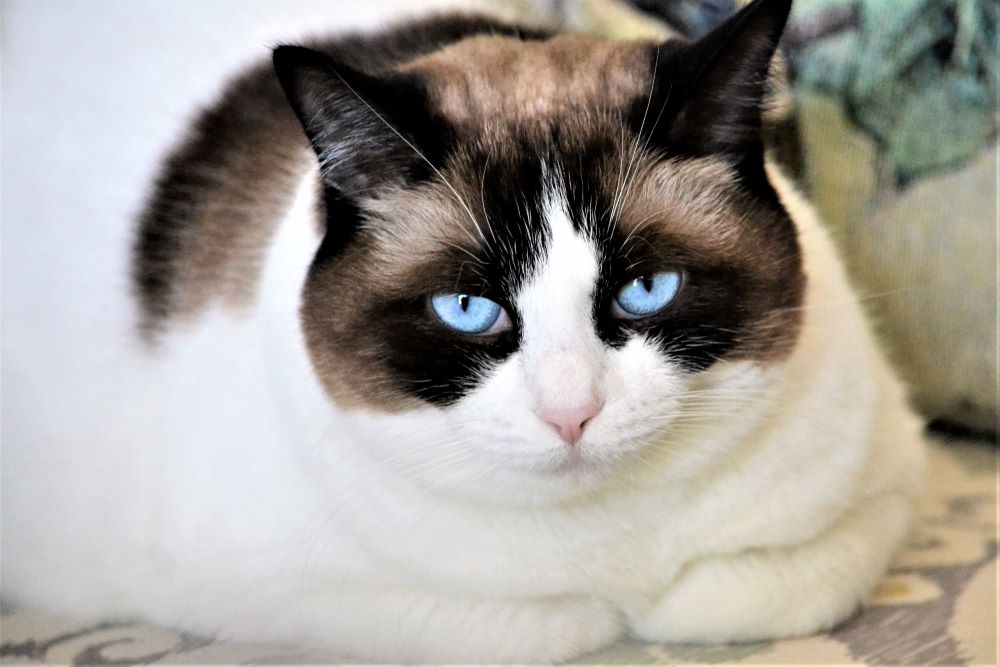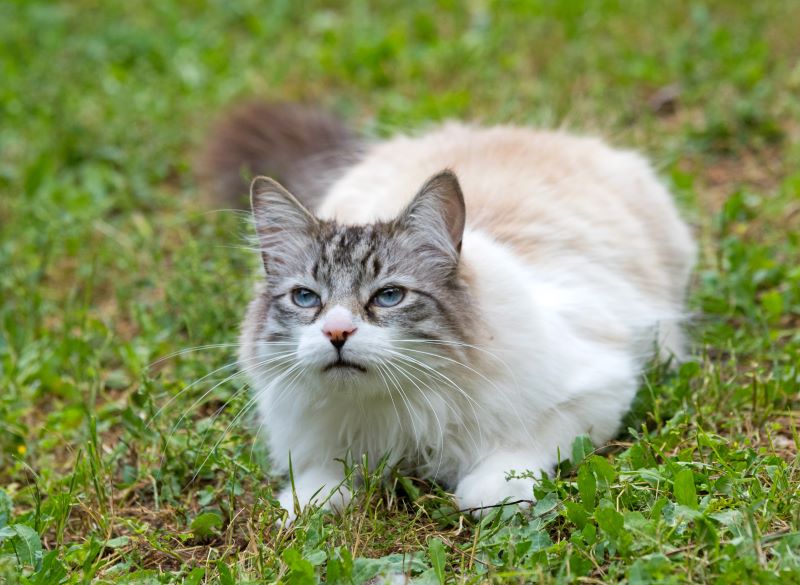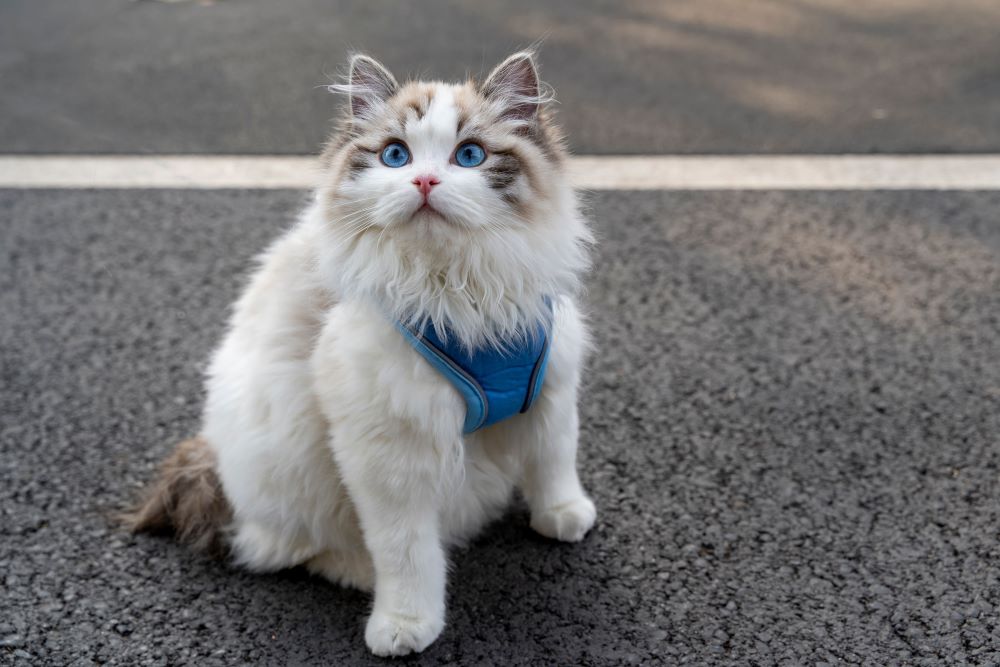Get Pet Insurance for your Cat & Dog

Zero
Documentation
Quick
Claim Process
Affordable
Premium
Terms and conditions apply*
- {{species}}
- {{indoorOutdoor}}
- {{suminsured}}
Ragdoll Cat Breed Characteristics & Information

Known for their striking blue eyes, silky semi-longhair coats, and docile personalities, Ragdolls have captured the hearts of cat lovers around the globe. In this article, we delve into the fascinating characteristics, history, and care tips that make Ragdoll cats truly extraordinary.
From their gentle temperament to their captivating appearance, join us on a journey to discover the allure and unique qualities that define these lovable and affectionate feline companions.
What is the Origin of Ragdoll Cats?
Originating in California in the 1960s, Ragdoll cats have a captivating history rooted in the efforts of breeder Ann Baker. Starting with a cat named Josephine, known for her unique qualities, Baker developed the foundation for the Ragdoll breed through selective breeding.
Initially tightly controlled, the breed has evolved, and today, Ragdolls are celebrated for their striking blue eyes, semi-longhair coats, and friendly, affectionate nature, making them a beloved and sought-after cat breed worldwide.
What are the Characteristics of Ragdoll Cats?
Understanding these characteristics is crucial for providing the best care and creating a harmonious living environment for Ragdoll cats. Their different characteristics are:
- LifeSpan: Ragdoll cats generally have a lifespan of around 12 to 15 years. However, when they receive proper care, nutrition, and regular veterinary check-ups, they might live up to 17 years.
- Height: Ragdoll cats are of medium to large size, with their height ranging from about 9 to 11 inches at the shoulder. Their substantial bone structure contributes to their overall size and presence.
- Colour and Coat: Ragdolls are known for their semi-longhair coats, which are soft and silky. They exhibit colour-point patterns, where their bodies are lighter in colour, and darker points appear on the ears, face, paws, and tail.
- Weight: Ragdoll cats are a large breed, with males typically weighing between 6.8 to 9 kg, and females typically weighing from 4.5 to 6.8 kg. People frequently confuse them as overweight due to their substantial size. They have a sturdy build.
- Behaviour and Personality: Ragdoll cats are known for their affectionate and people-oriented personalities. They often form strong bonds with their human companions and enjoy being involved in family activities.
- Isolation Period: Ragdolls have short isolation periods and are not known for enjoying extended periods of isolation. They thrive on social interaction and are more content when involved in family activities.
- Living Conditions: Ragdolls adapt well to various living conditions. Whether in an apartment or a house, they appreciate a calm and nurturing environment. Their adaptable nature makes them suitable for families and homes with other pets.
- Temperament: Renowned for their gentle and laid-back temperament, Ragdolls live up to their name by often going limp when held. They are typically calm, adaptable, and known for their sociable nature.
- Breed Group: Ragdoll cats belong to the long-haired cat breed group and are generally characterised by their luxurious semi-longhair coats and striking appearances.
How to Train Ragdoll Cats?

Training Ragdoll cats can be a rewarding experience with their sociable nature and willingness to interact. Here are some points on how to train Ragdoll cats effectively:
- Behavioural Training: Utilise positive reinforcement techniques, such as treats, praise, or affection, to reward desired behaviours. This encourages your Ragdoll cat to associate good behaviour with positive outcomes.
- Socialisation: Expose your Ragdoll cat to different people, environments, and experiences from a young age. This promotes socialisation and helps them become more adaptable and comfortable in various situations.
- Teach Basic Commands: Teach basic commands like "eat," "go," and "run." Use consistent verbal cues and rewards to reinforce these commands. Ragdolls are intelligent and can learn a variety of commands with patience.
- Scratching Training: Ragdolls have a natural instinct to scratch. Introduce scratching posts early on, and use positive reinforcement to encourage them to use the posts rather than furniture.
- Litter Box: Ragdolls adapt well and learn litter box training easily. Ensure the litter box is kept clean and placed in a quiet, accessible location. Reward them for using it appropriately.
What are the Health Problems with Ragdoll Cats?
Ragdoll cats are generally healthy, but like any breed, they may be prone to certain health issues. Here are five common health problems associated with Ragdoll cats:
- Hypertrophic Cardiomyopathy (HCM): Ragdolls, like many other cat breeds, may be predisposed to HCM, a heart condition. Regular cardiac screenings by a veterinarian are crucial for early detection and management.
- Urinary Tract Issues: Some Ragdolls may be susceptible to urinary tract problems, including issues like urinary crystals or infections. Ensuring proper hydration and a balanced diet can help prevent these issues.
- Periodontal Disease: Due to their genetic predisposition and facial structure, Ragdolls may be more prone to dental problems. Regular dental care, including brushing their teeth and providing dental treats, is essential.
- Gastrointestinal Issues: Some Ragdolls may experience gastrointestinal problems, such as sensitive stomachs or digestive issues. Feeding a high-quality, well-balanced diet can help address and prevent such issues.
- Joint Issues: Larger breeds like Ragdolls may be prone to joint problems, like arthritis. Providing a comfortable and well-padded resting place and monitoring their mobility can help manage joint health.
How to Take Care of Ragdoll Cats?

Ragdoll cats require high maintenance in some areas but are relatively easier to care for. Here are key points on how to take care of Ragdoll cats:
- Diet and Nutrition: Feed your Ragdoll a well-balanced and nutritious diet, such as meat and animal protein. Consult with your veterinarian to choose high-quality cat food that supports their health, including coat condition and weight management.
- Feeding: Adult Ragdolls males should be fed around 350 calories per day, and female Ragdolls should be fed 250 calories per day. Ragdoll kittens need 3-4 meals per day of more calories than adult cats and adult cats need two meals per day.
- Grooming: Ragdoll cats have semi-longhair coats that require regular grooming. Brush their fur a few times a week to prevent matting and reduce shedding. Pay special attention to the undercoat.
- Dental Care: Due to their facial structure, Ragdolls may be prone to dental issues. Establish a dental care routine by brushing their teeth regularly or providing dental treats to maintain oral health.
- Hydration: Ensure that your Ragdoll stays hydrated by providing fresh water. Consider incorporating wet food into their diet, as it contributes to their overall hydration.
- Regular Veterinary Check-ups: Schedule routine veterinary check-ups to monitor your Ragdoll's health. Early detection of potential issues allows for prompt intervention and management.
- Litter Box Maintenance: Keep the litter box clean and placed in a quiet, accessible location. Ragdolls are generally meticulous about their hygiene, and a well-maintained litter box encourages regular use.
- Temperature Control: Monitor the temperature in your home, especially in warmer weather. Ragdolls may be sensitive to heat due to their fur and facial structure, so ensure they have access to cool areas.
With their enchanting blue eyes and silky coats, Ragdoll cats are a unique and beloved feline breed. As we explored various aspects of these cats, from their physical characteristics to grooming needs, health considerations, and training techniques, it became evident that Ragdolls are not just pets; they are cherished companions with distinct traits and requirements.












